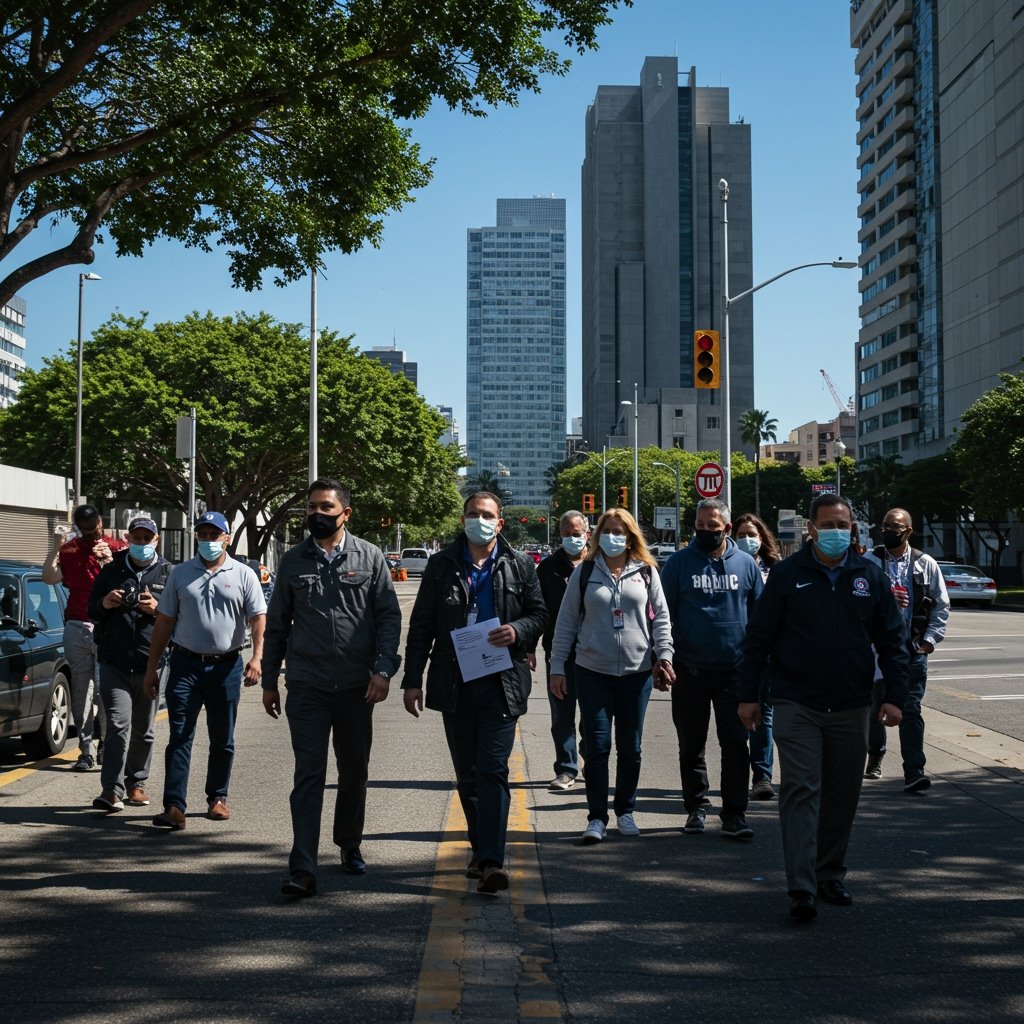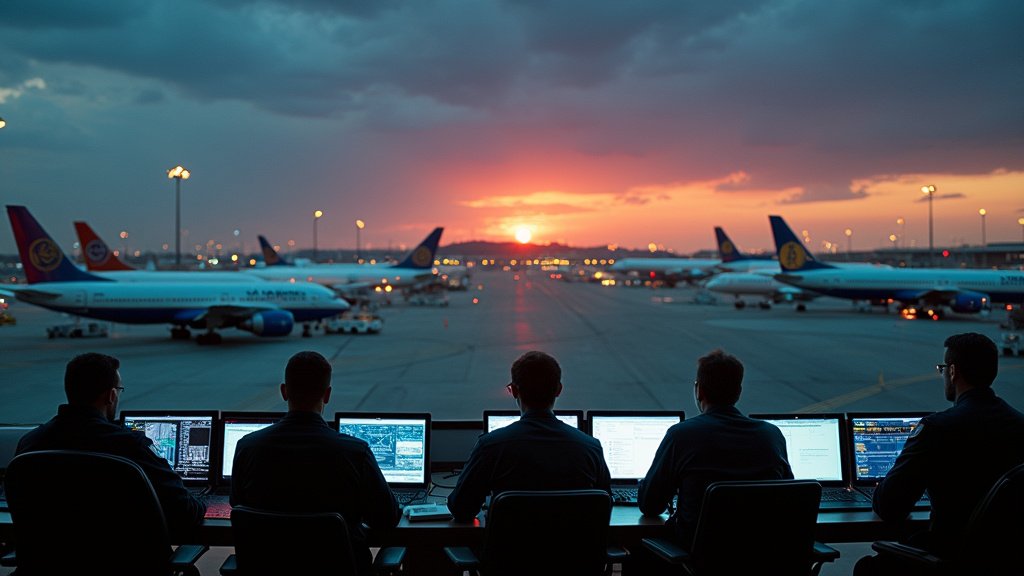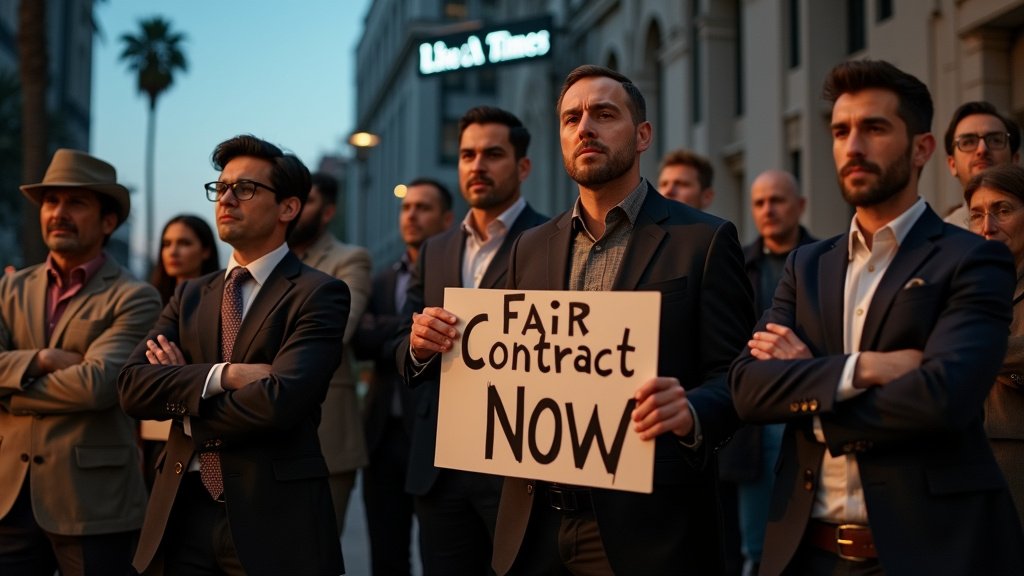Los Angeles is currently experiencing a period of significant tension and uncertainty surrounding federal immigration enforcement. Protests against these operations have been ongoing in the city since June 6, marked by sometimes violent clashes between residents, immigration advocates, and local and federal law enforcement. These confrontations have resulted in damage and vandalism downtown.
To mitigate the destruction, a curfew was implemented downtown, initially starting at 8 p.m. and later adjusted to 10 p.m. as of the Monday before June 16. While intended to restore order, the curfew has also impacted economic activity in the area.
However, the situation on the ground has been further complicated by conflicting signals emanating from Washington regarding the future direction of immigration enforcement efforts.
The Conflicting Directives
A wave of confusion arose following recent statements made by President Trump on Truth Social. The President threatened to intensify efforts to detain and deport individuals he referred to as “Illegal Aliens” in major cities across the country, specifically citing Los Angeles. He posited, without presenting proof, that such intensified efforts were necessary to counter purported attempts to boost Democratic voter turnout.
This assertive stance appears to stand in direct contrast with an apparent internal directive from Immigration and Customs Enforcement (ICE). Sent by senior official Tatum King the previous Thursday, the directive reportedly instructed officers to pause arrests in specific sectors: agriculture, restaurants, and hotels. This pause was seemingly intended to apply except in cases involving serious criminal activity, such as human trafficking, money laundering, or drug smuggling. The discrepancy between the President’s public pronouncements and the operational guidance reportedly circulating within the agency has created a climate of ambiguity regarding federal enforcement priorities.
Enforcement Goals and Local Impact
Adding another layer to the complex picture, White House deputy chief of staff Stephen Miller indicated ambitious targets for ICE operations. Miller stated that ICE officers would aim to achieve at least 3,000 arrests daily. This figure represents a significant increase when compared to the approximately 650 arrests per day recorded during the first five months of Trump’s second term.
The intensified rhetoric and operational targets come amidst ongoing local enforcement actions related to the protests themselves. Since the demonstrations began on June 6, the Los Angeles Police Department (LAPD) has made a total of 575 arrests in connection with the unrest.
Protests and Public Response
The protests in Los Angeles have been a focal point of community expression and activism regarding immigration policy. While initially marked by intense confrontations and resulting in property damage, the level of activity appeared to decrease more recently. Demonstrations were notably quieter on the Sunday before June 16, although a contingent of around 200 activists reportedly remained downtown, continuing their vigil.
The community response reflects deep divisions and strong emotions surrounding immigration enforcement, highlighting the challenges faced by both residents and law enforcement in navigating federal directives and local concerns.
Uncertainty and the Path Forward
The juxtaposition of President Trump’s threat to escalate sweeps in cities like Los Angeles and the internal ICE guidance suggesting a more targeted approach, particularly in specific industries, leaves the actual state of enforcement intentions unclear. The administration’s conflicting messages, coupled with ambitious arrest goals outlined by senior staff, contribute to widespread uncertainty among immigrant communities and local authorities alike. As of the period leading up to June 16, the ultimate impact and implementation of these varied signals remained subject to clarification.





